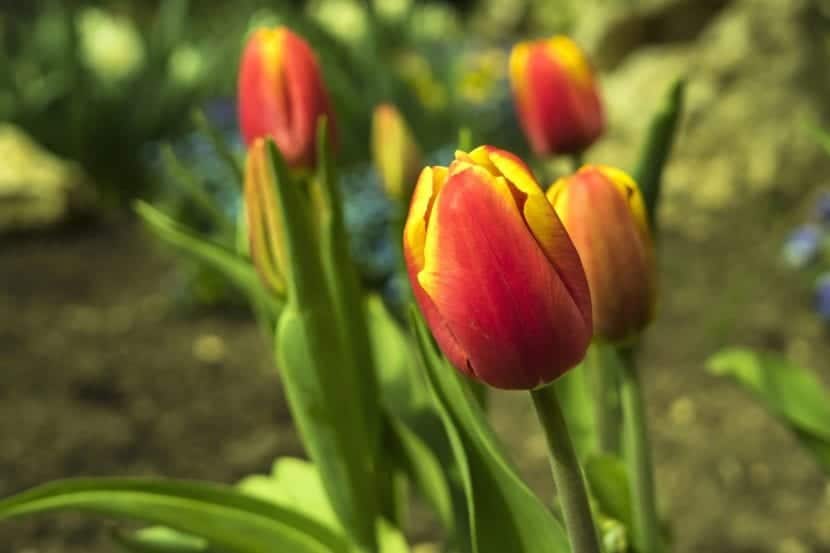
When spring arrives, the plants resume their growth, and many flourish. The temperatures are very pleasant, so much so that it is inevitable to want to be outside, in the open air, and spend a few moments simply observing our crops. But if there is something that can improve our experience even more, it is to plant some bulbous plants that will make life happy, even for a few days.
But What are those spring bulbous plants that cannot be missing in the garden, patio or terrace? The truth is that, I'm not going to fool you, there are many 🙂. So we have made a selection of the most interesting, without forgetting the common ones, so that you can choose the ones you like the most.
What are bulbous plants?
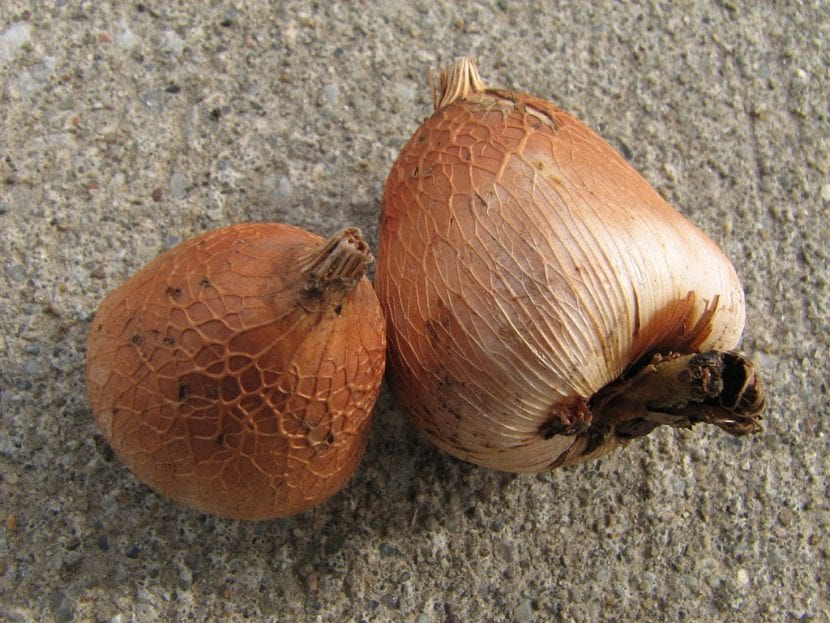
Gladiolus bulb.
While it is more or less easy to know what a bulbous plant is, the reality is that there can be some confusion, especially if we are new to the world of gardening or if we have never decided to grow these types of plant beings until now. Well, in order to resolve this question, tell you that a bulb is an organ that generally grows underground and has the function of serving as a »store» for reserves for the plants.
It can be of different shapes and sizes, but it is true that They are usually more or less triangular-oval in shape, and measure on average about 4-5cm in height for more or less the same of its widest part. From its base sprout roots whose mission is to absorb the water and the nutrients dissolved in it, especially during its vegetative season, or what is the same, when its leaves, flowers and fruits are growing and developing.
Selection of spring flowering bulbous
Broadly speaking, bulbous plants are classified into two large groups: those that bloom in spring and those that do so in summer / early autumn. On this occasion, we are going to show you which are the first ones:
allium giganteum
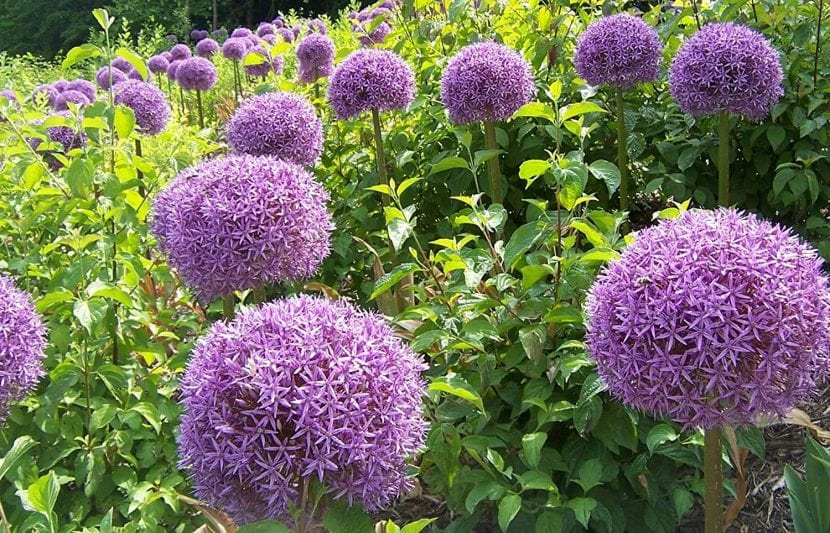
The allium giganteum, or giant onion, are plants native to the temperate regions of Asia. They can reach heights of up to 1,5 meters, and produce purple and white flowers. In addition, they emit a very characteristic aroma, because they contain allyl sulphides and sulfoxides, which is what gives onions and garlic their smell, two plants that belong to this same genus (Allium) by the way.
Anemone
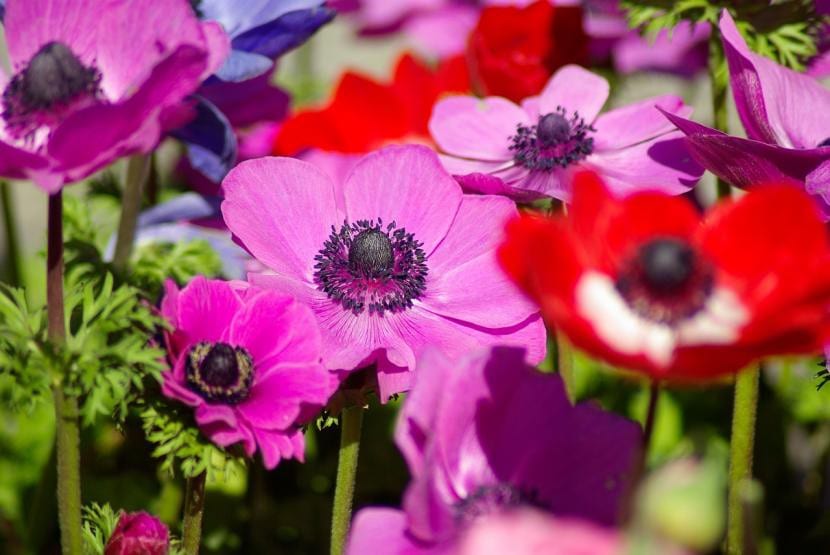
All the anemones bulbous plants originating in the Mediterranean region that they can reach a height of between 20 and 40 centimeters. The flowers, which can be blue, white, red or even purple, are 3-5cm in diameter, and sprout from a long stem called a peduncle.
Imperial crown
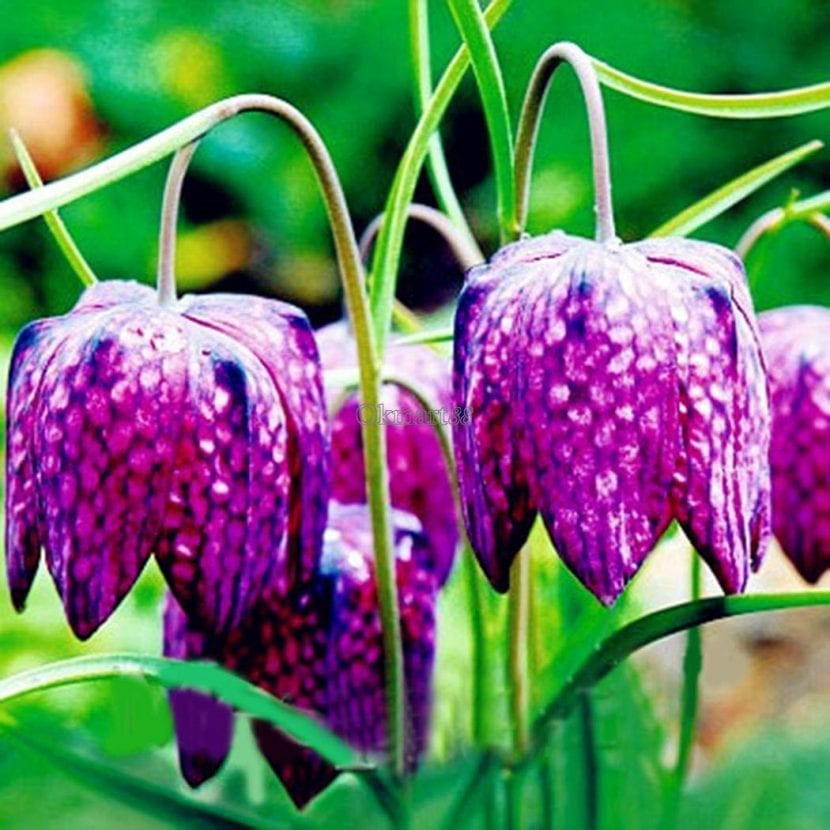
Belonging to the genus Fritillaria, are bulbous native to the temperate regions of the northern hemisphere that they can grow to heights between 10 and 120 centimeters. Its flowers are very curious, since they seem to be upside down, sprouting in heads with the fallen petals of different colors, red and yellow being common, but the lilac of the image is incredibly decorative.
Crocus
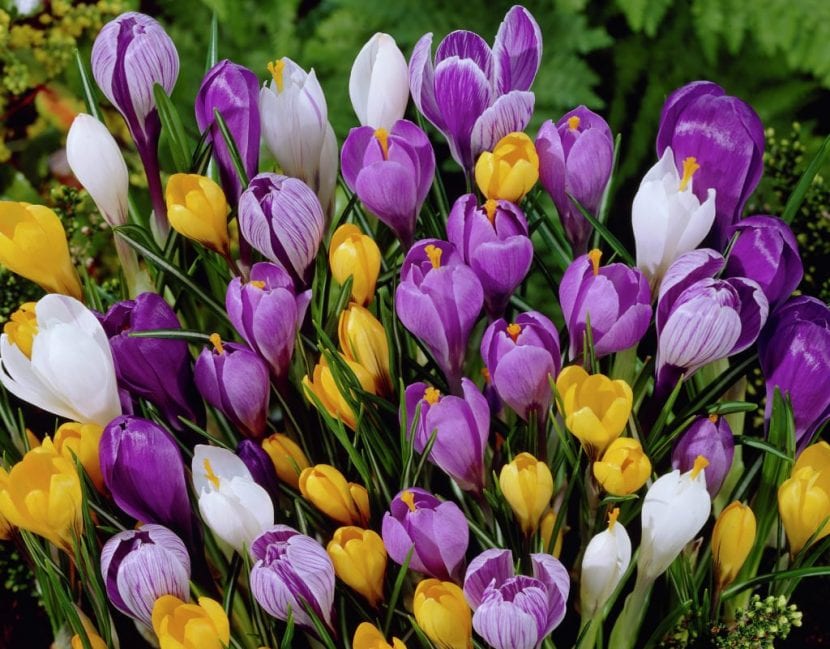
The Crocus They are bulbous that are present in North Africa, Asia and Europe. Its underground organ is a corm; that is, a thickened stem with a swollen base that grows vertically. From it sprout leaves of about 15cm in height, and its flower stems up to 20cm. These can be yellow, white or purple.
Freesia
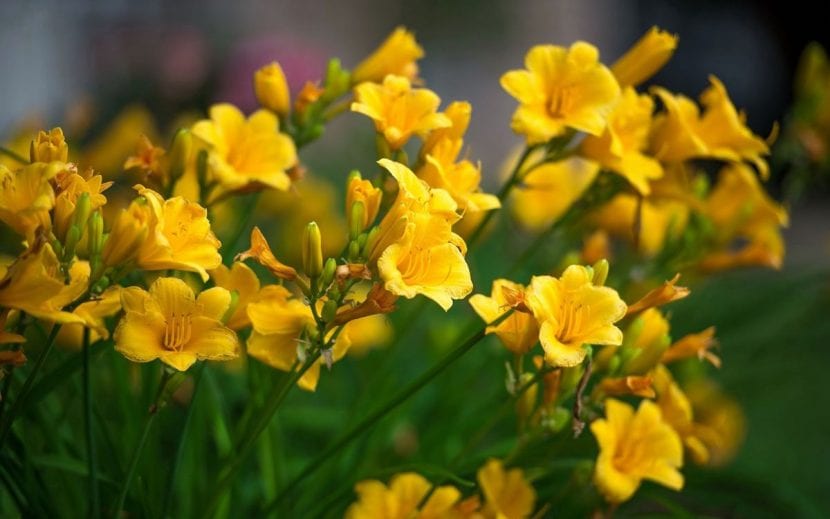
Freesia plants that, like Crocuses, produce leaves and flowers from a corm found underground. Native to Africa, they reach a maximum height -including the flower stalk- of 30 centimeters. Its petals are white, red, pink or yellow.
Galanthus
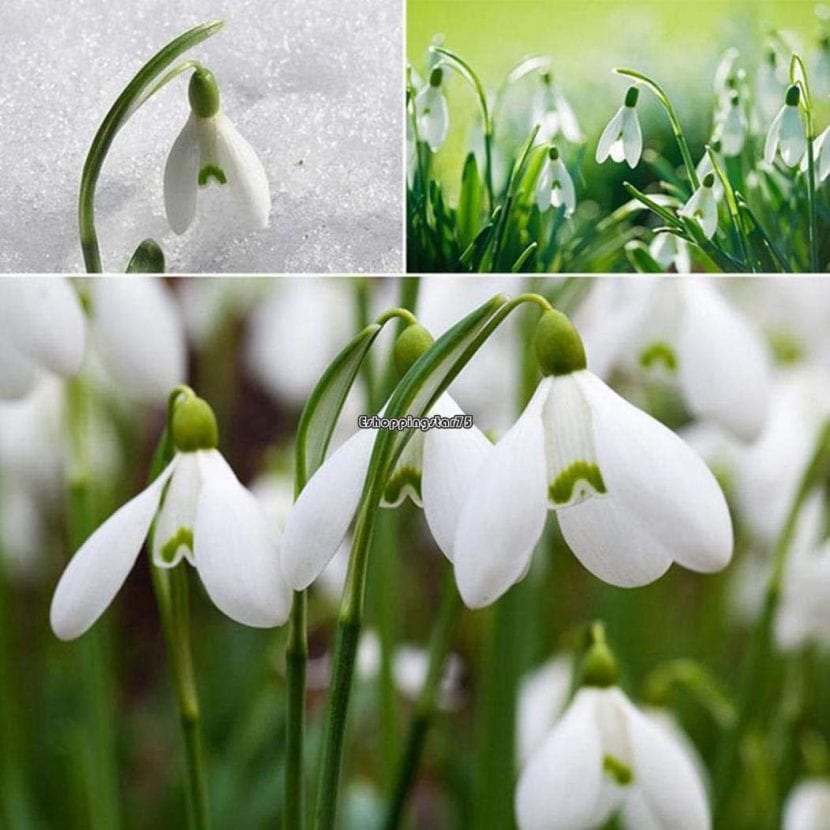
Also known as snowdrops, these bulbous native to Europe and Asia grow only up to 30 centimeters tall. Its flowers, also small, about 2cm in diameter, are of a beautiful pure white color.
Hyacinths
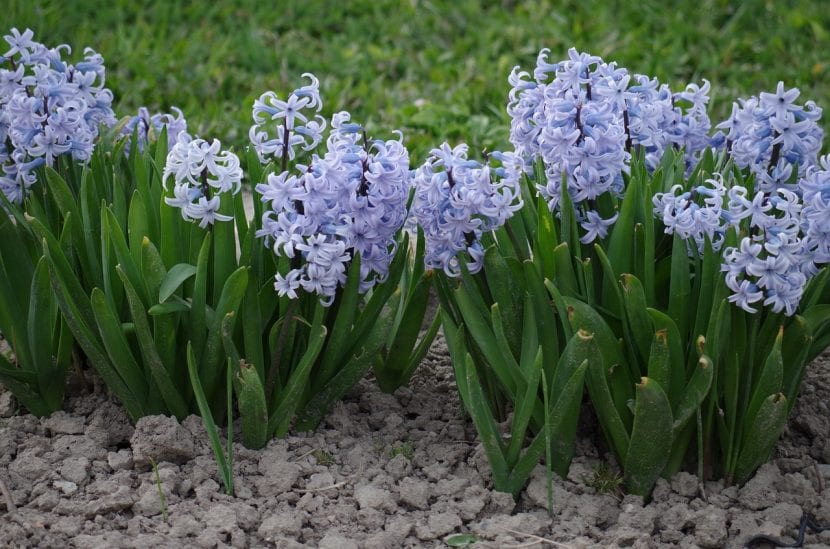
The hyacinths they are one of the most cultivated spring bulbous plants. Native to the Mediterranean region and southern Africa, reach a height of about 40-50cm, and produce flowers grouped on a white, pink or blue flower stalk.
Lirio

Lilies, belonging to the genus Iris, are bulbous native to much of the northern hemisphere, such as Europe and North America, as well as North Africa. They reach a height of up to 1 meter, and they produce flowers of very bright colors, such as yellow, white, orange ... and even bicolored!
Lily of the valley
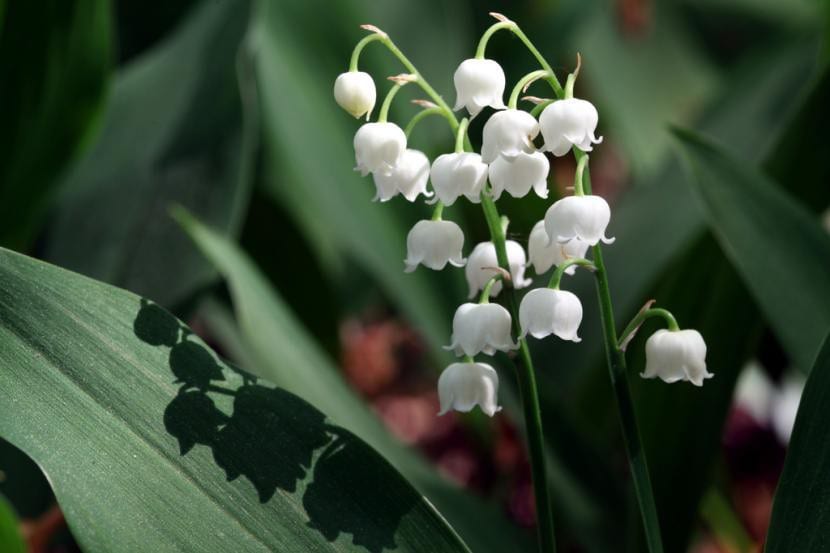
It belongs to the genus Convallaria, and is a rhizomatous plant native to temperate areas of Europe. Reaches 30 centimeters in height, and its flowers, white or pink, sprout in clusters.
Muscari
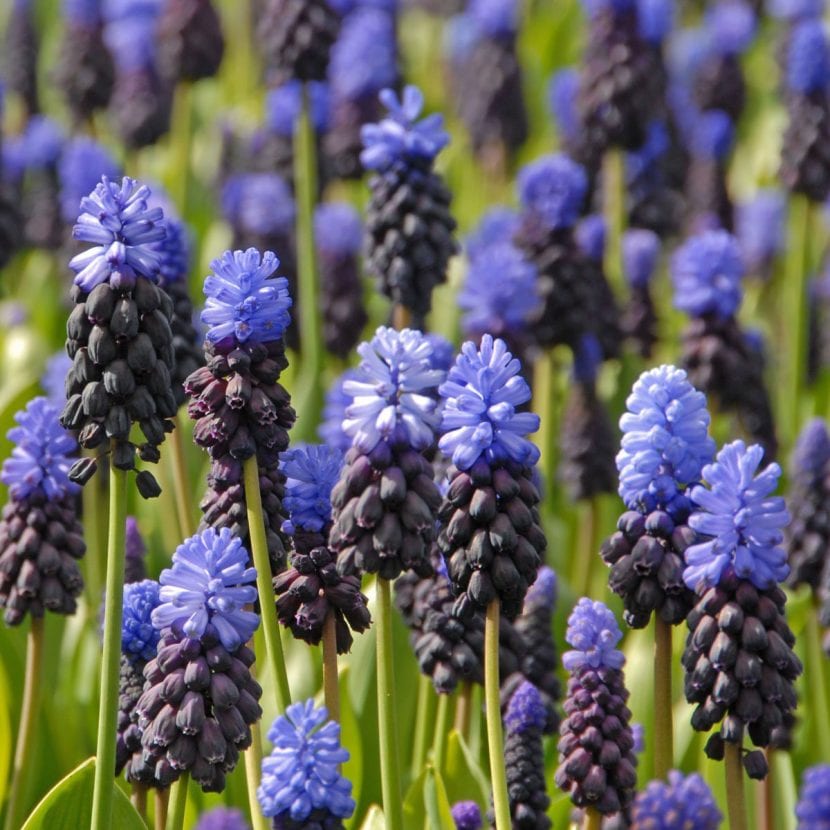
Plants of the genus Muscari, known as grape hyacinths, are a plants up to 25 centimeters tall They produce flowers in simple clusters of a magnificent white or blue color.
Narcissus
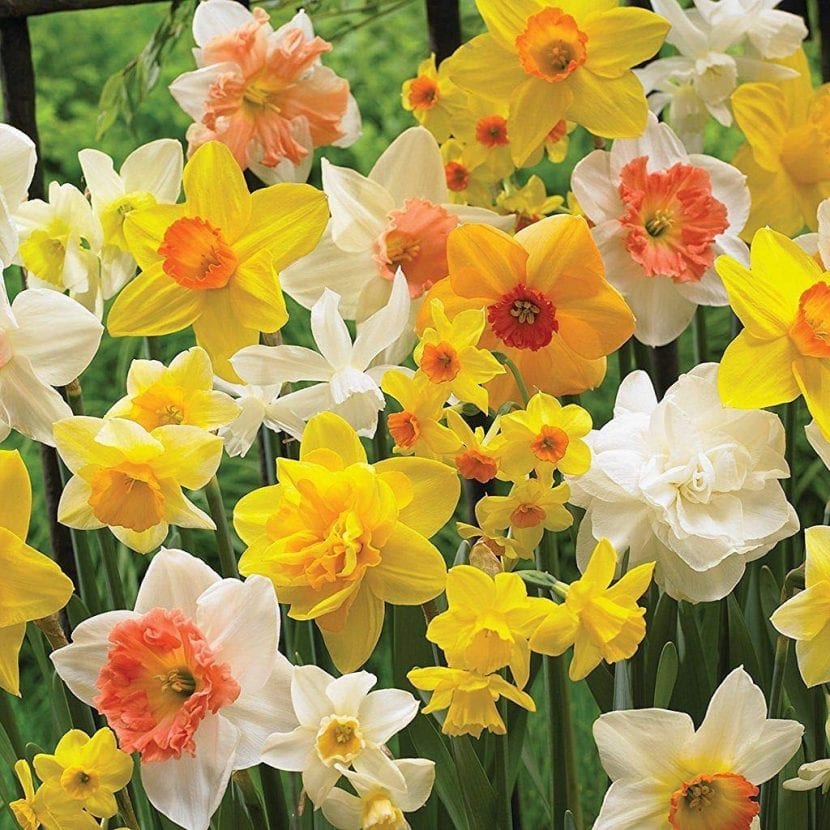
The daffodils originating in Europe, and grow up to 40-45 centimeters tall. The flowers are very pretty, appearing in umbels or alone, with the highly developed crown of colors ranging from white to orange, passing through yellow.
Ranunculus

Ranunculus are plants of great ornamental value, native to Europe and Asia. They reach heights of between 30 and 40 centimeters, and its flowers are red, orange or white, simple -with a single crown of petals- or double -with two crowns-.
Tulip
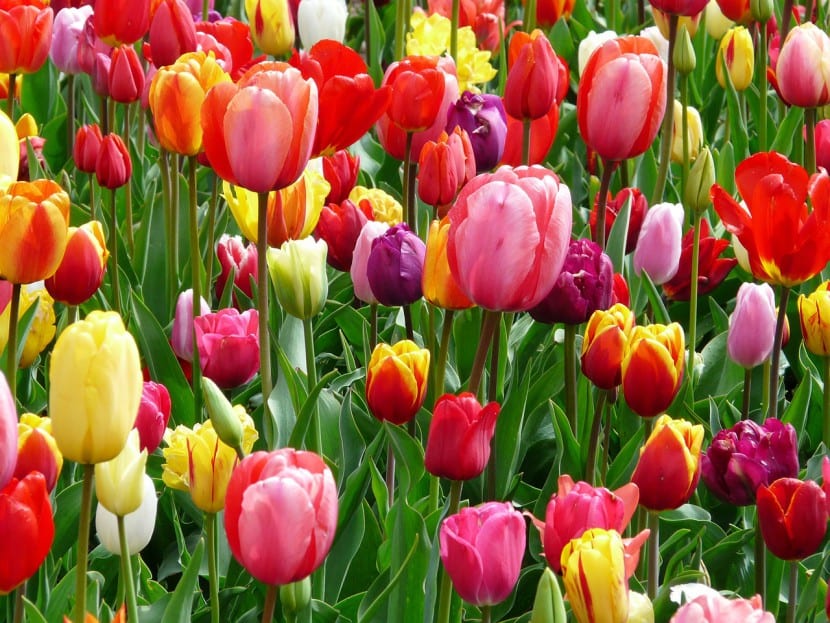
Who does not know the tulips? They are, almost in all probability, the most widely cultivated bulbous in the world. Native to the Middle East, they are plants that reach a height of about 30-35cm, and produce very showy flowers of red, yellow, white, pink, orange, and bicolored.
How do you take care of bulbous plants that bloom in spring?
Now that you have seen the flowers that can cheer you up the most during this season, you are surely curious to know how they are cared for, right? Well, it really is very simple. You just have to keep these tips in mind:
Location
You have to put them abroad, in an area where sunlight gives them a minimum of 4 hours. You can plant them both in pots or planters, as well as in the garden, since as they do not have invasive roots and are relatively small plants, they take up little space.
Earth
- Flower pot: it is advisable to use a mixture of substrates to get one that is rich in nutrients and that, at the same time, has good drainage, such as universal growing substrate with perlite in equal parts. You can buy the first one here, and the second here,
- Garden: the land must be fertile, with good drainage.
Irrigation
Water them between once and twice a week, depending on the weather conditions (the drier and warmer it is, the more you will have to water as the soil will dry out faster).
Subscriber

It is interesting, and highly recommended, pay them throughout the season, from the first moment you see the leaves sprout until the flowers wither.
Both organic and guano are used as fertilizers (get it here), such as the compounds sold in nurseries.
Plantation
These spring bulbs are planted in autumn / winter so that they flower an average of three months later. You have to bury them twice their height; that is, if they measure 4cm, they will bury about 7-8cm. This is very important as it will allow them to have a better development.
And if we talk about the separation between bulbs, the ideal is to respect the one indicated on the packaging. But if you want a thick rug, put them closer together.
Conservation
When they finish blooming you can do two things:
- Leave the bulbs where they are and don't water them until spring.
- Or take them out and keep them in a cool, dry place.
To do? Well, if the winter is mild-warm, without frosts or very weak, nothing will happen to them by having them in the pots or soils. But if they are very cold, with significant and / or copious frosts, it is worth preventing.
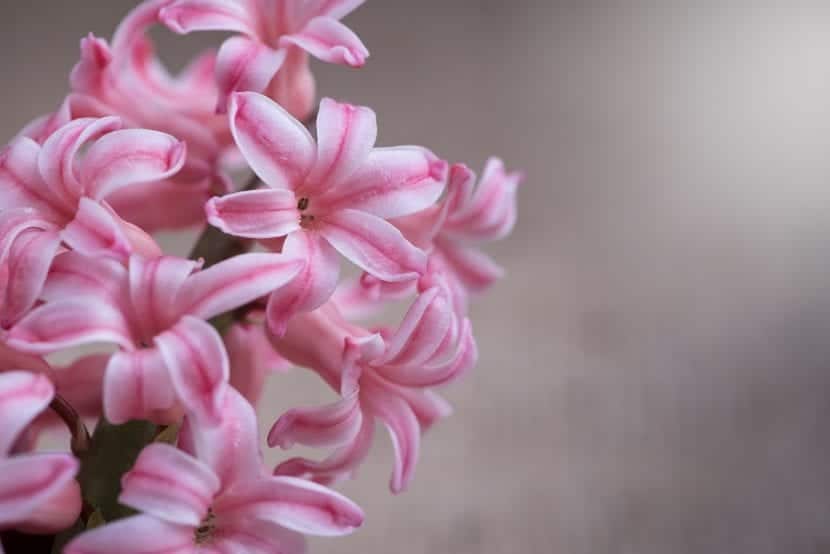
And with this we are done. We hope you have learned a lot from these magnificent flowers.














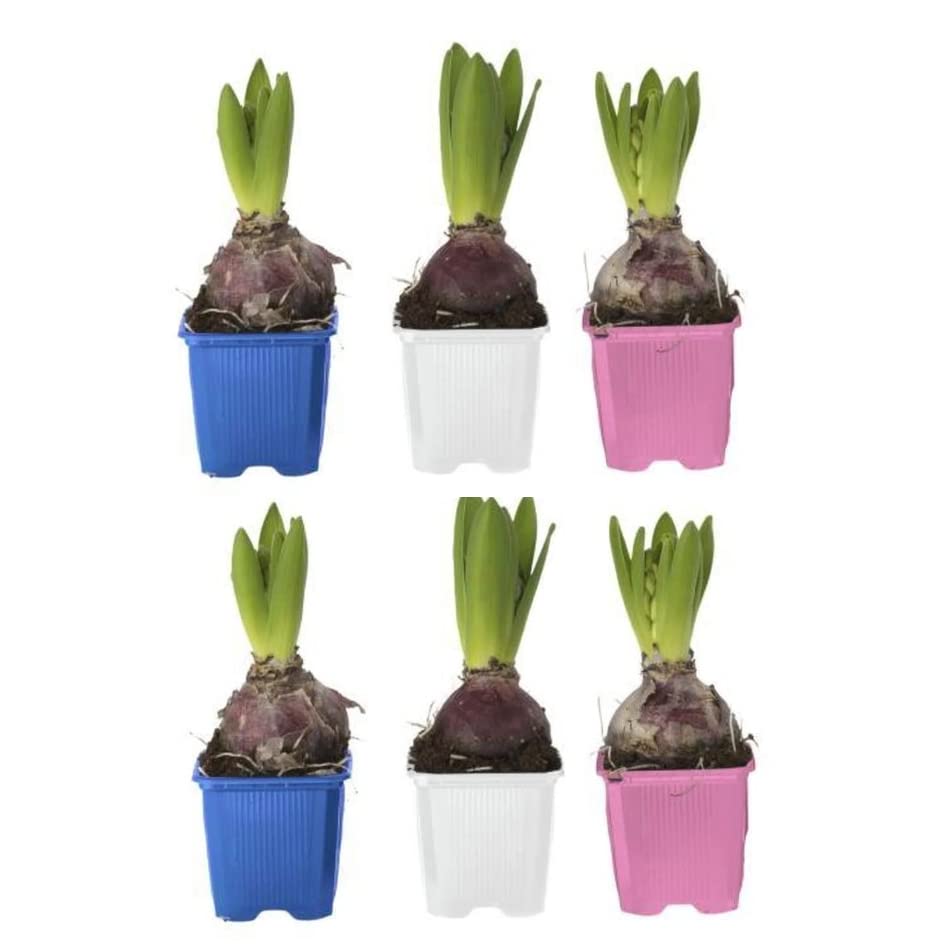







I love bulbous plants, thank you very much for your advice.
Thanks. We are glad that it is 🙂